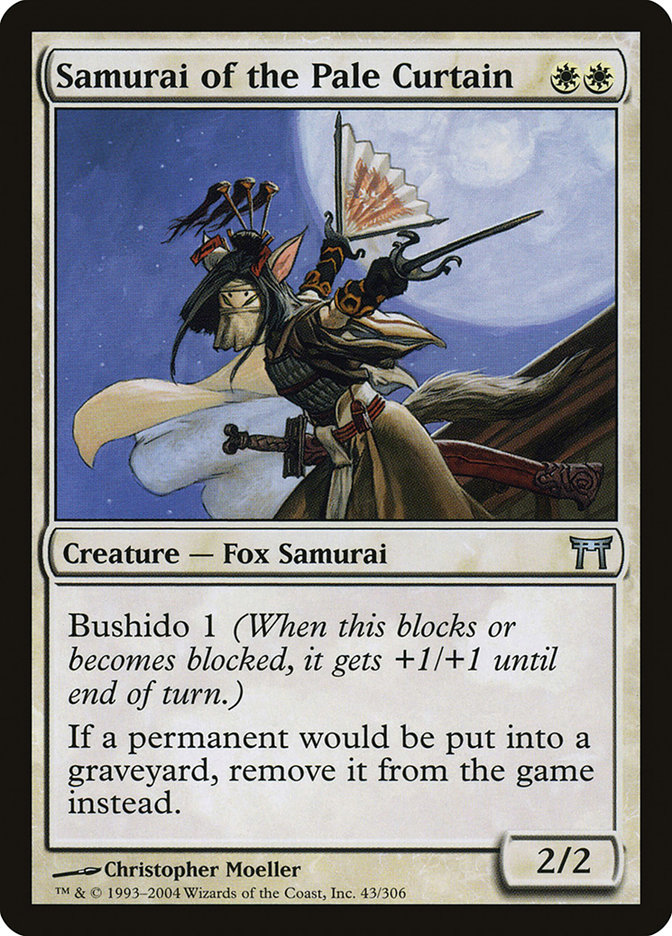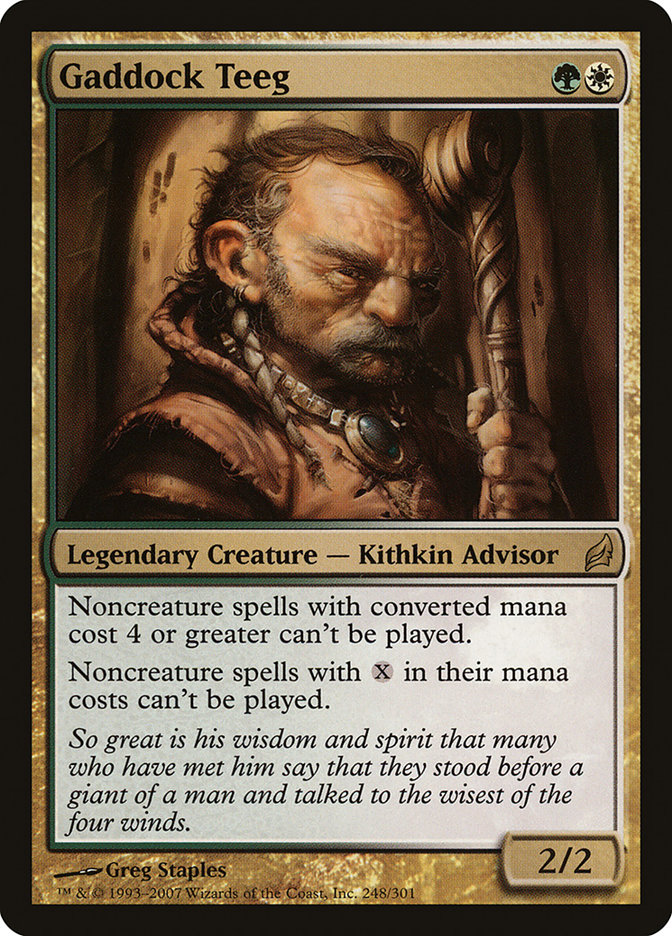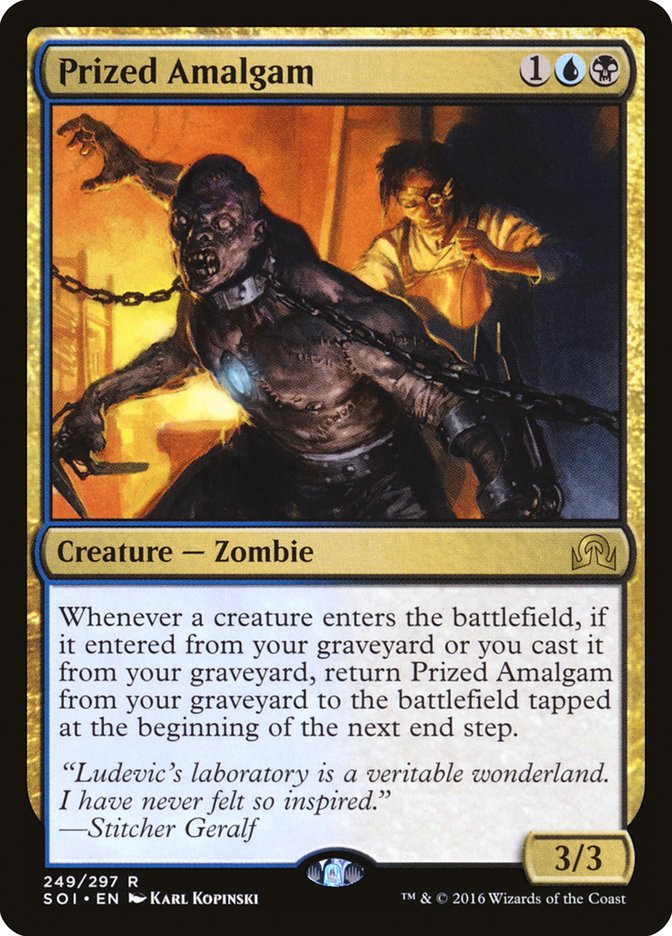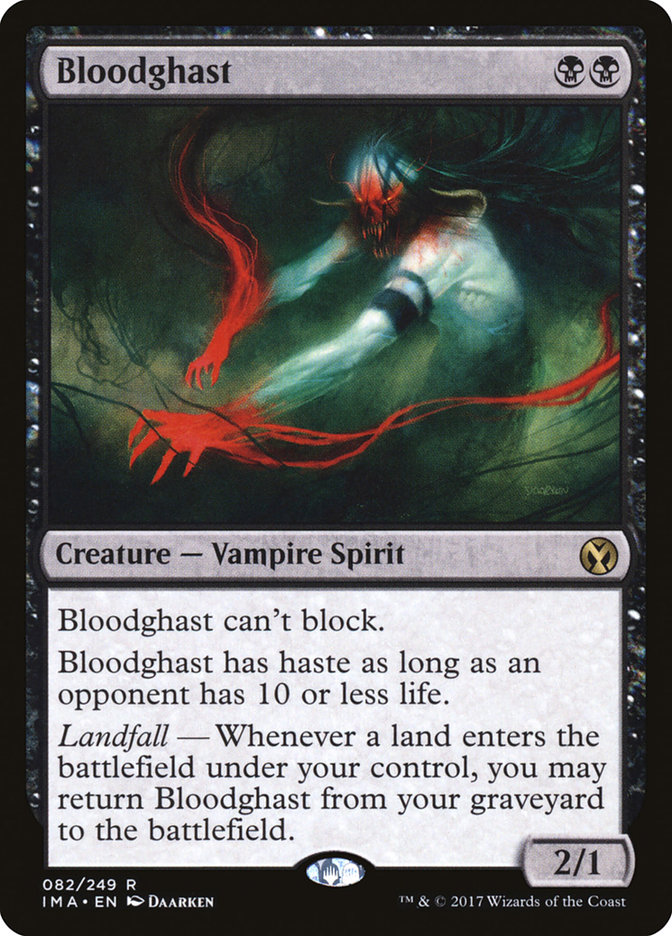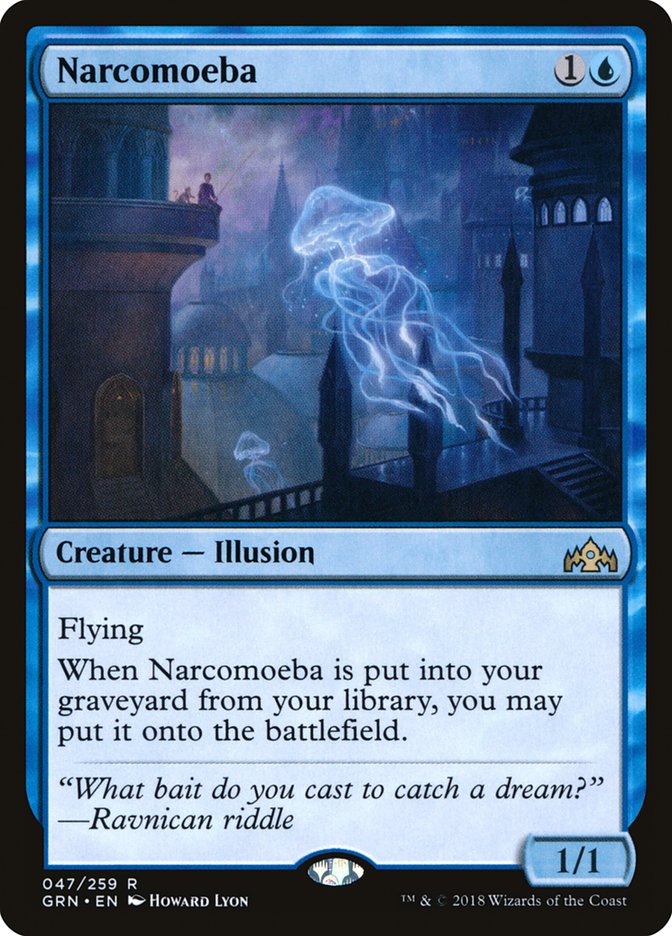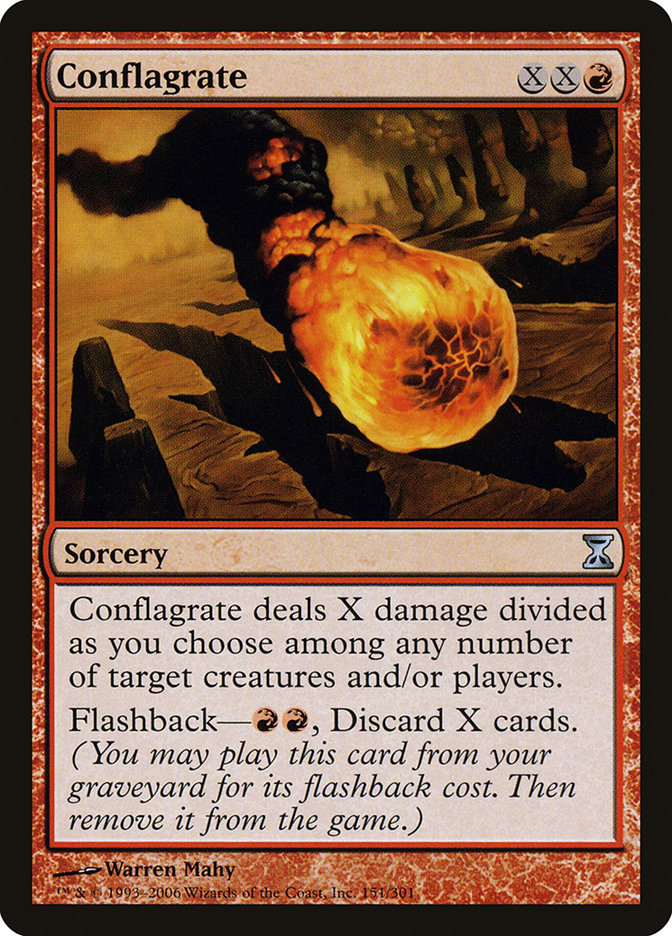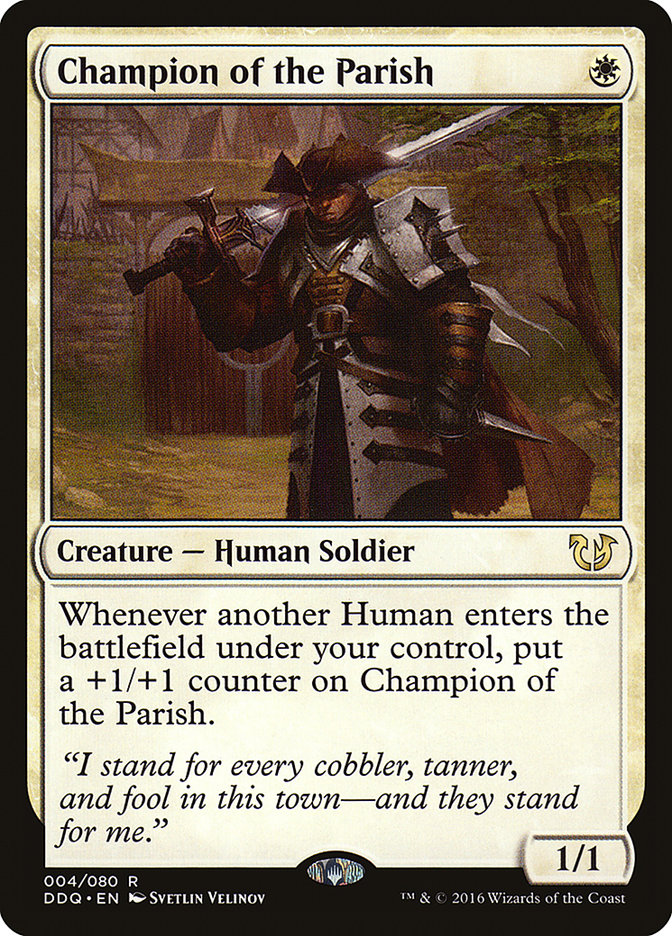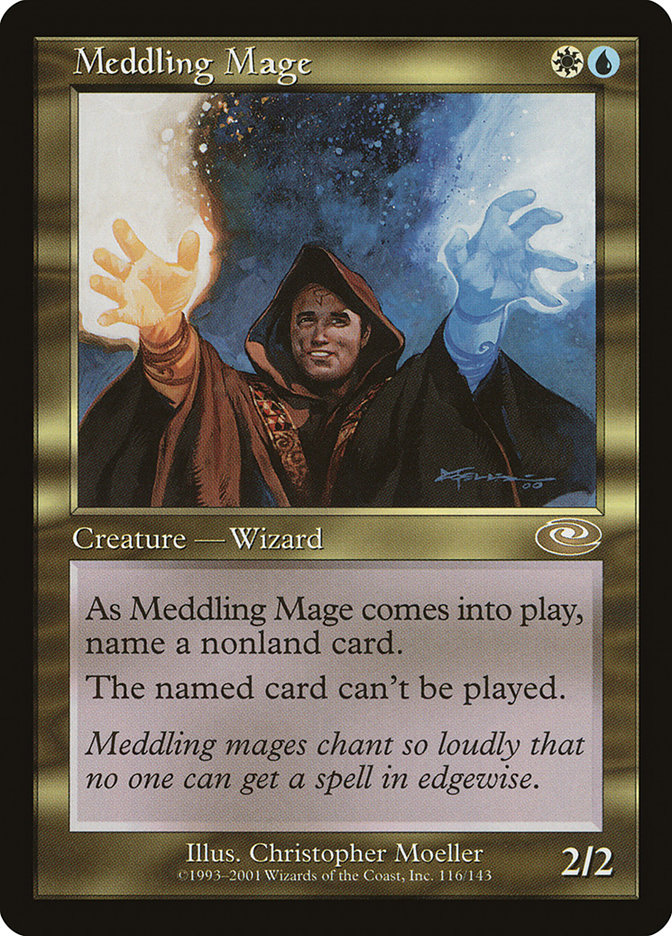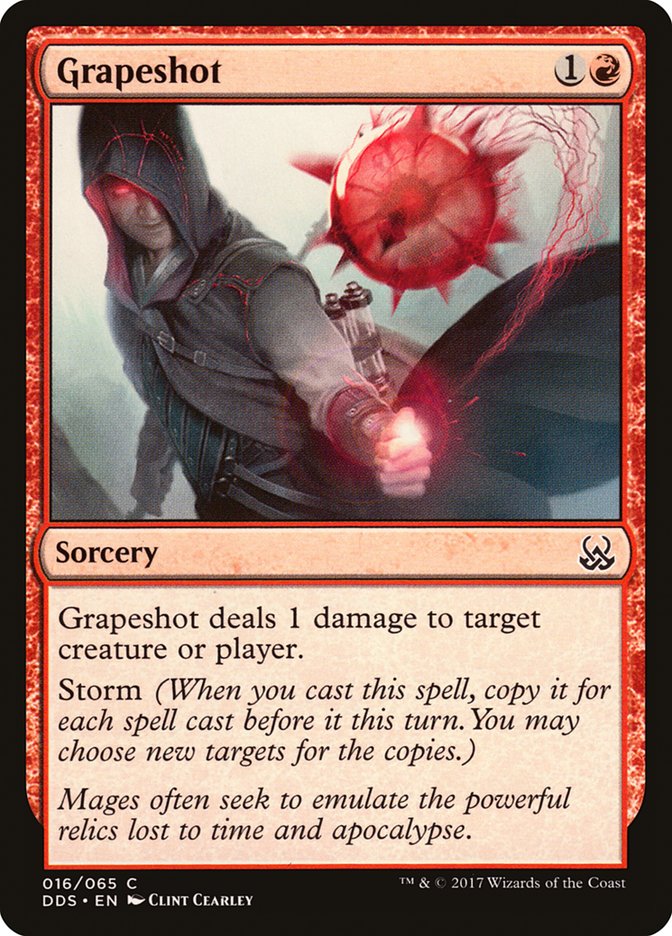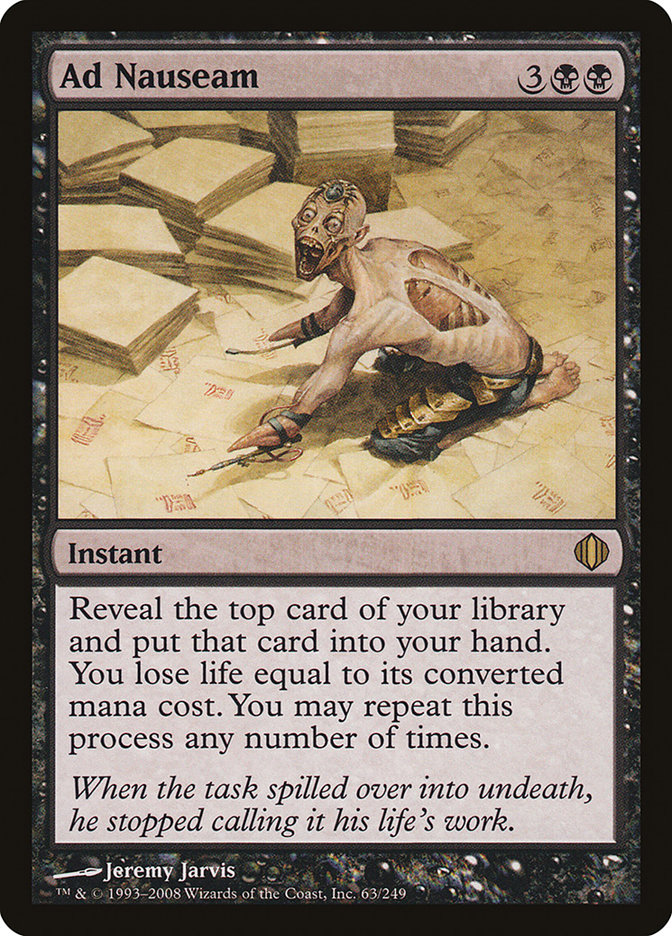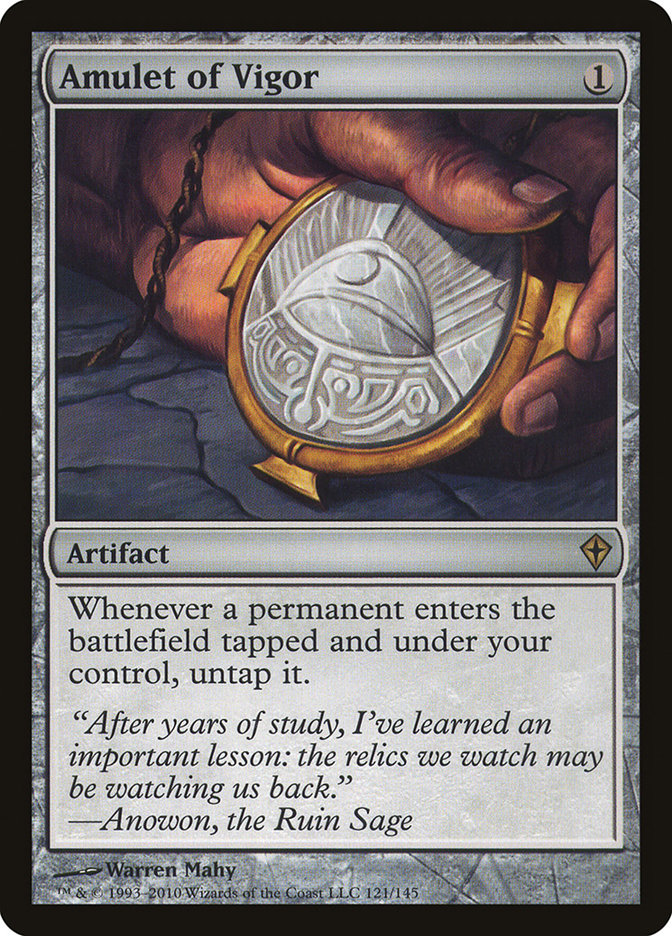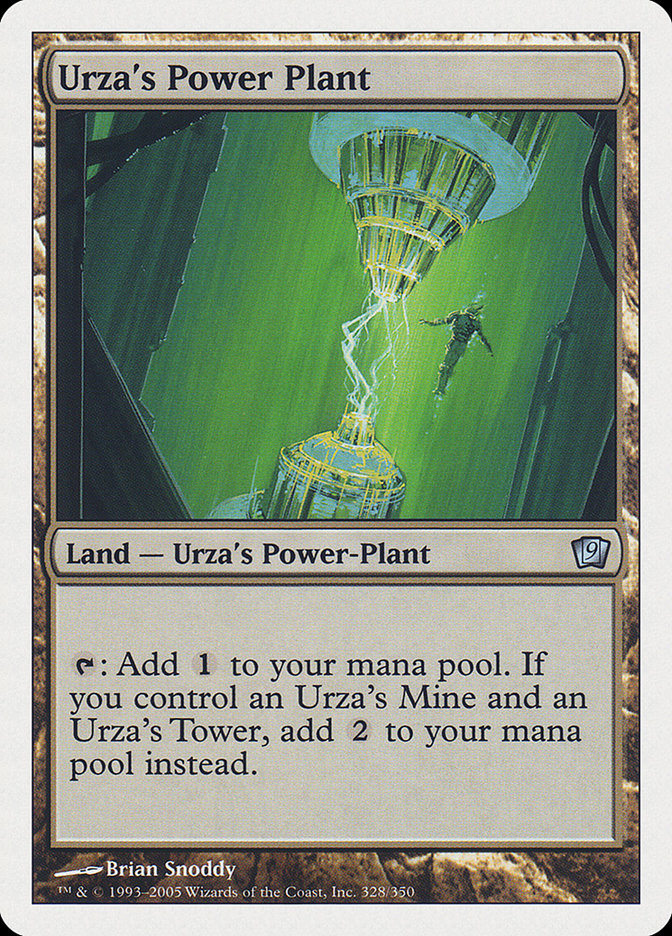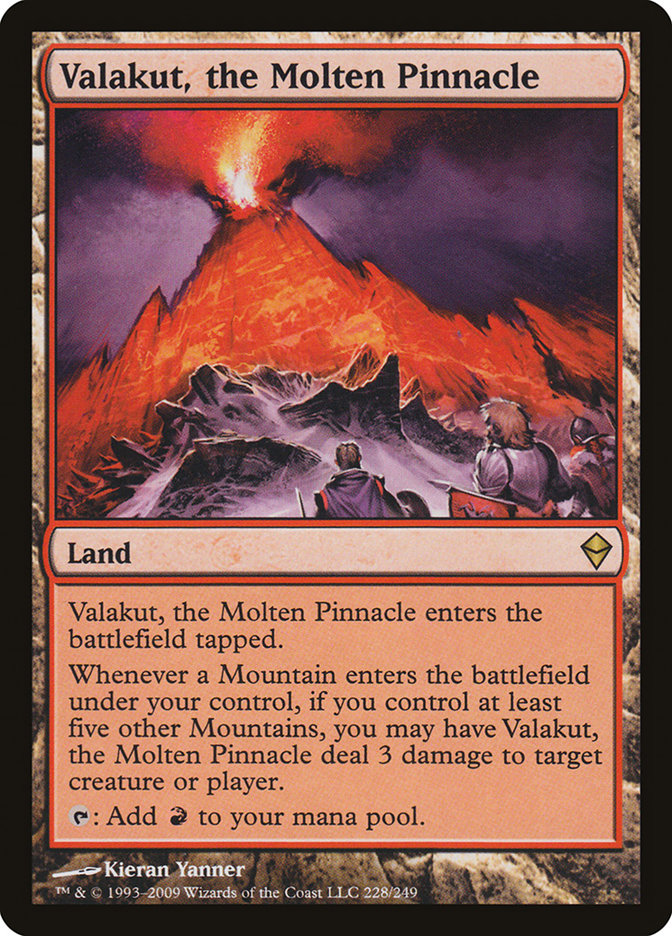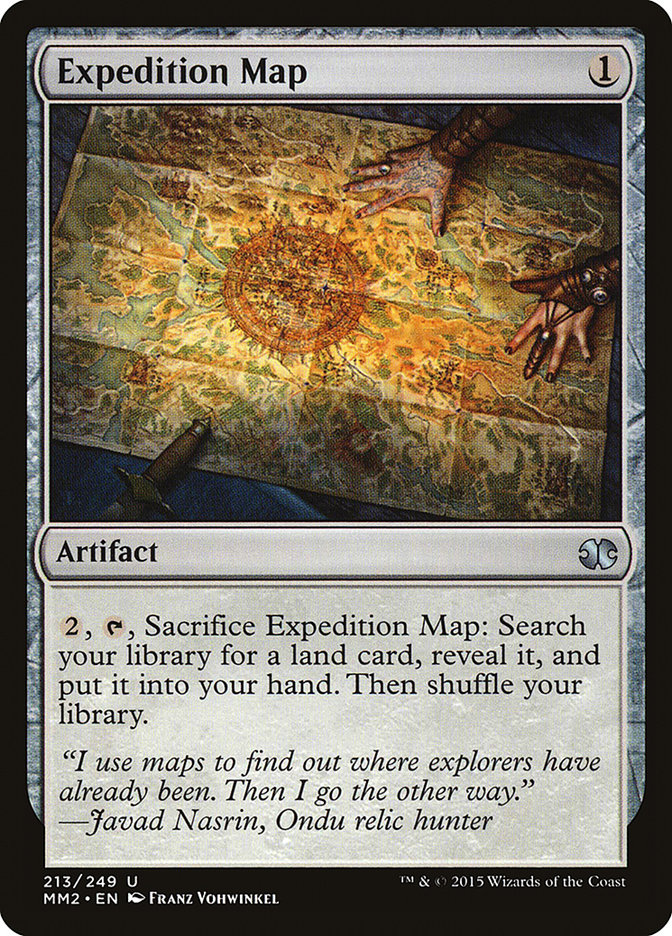“It’s my article. I’ll gloat if I want to.”
It’s fairly abnormal for the co-op articles that we run to be confidence boosters. The nature of the What We’d Play series is to playfully pit writers against each other in the name of having a called shot for the best deck of the weekend. With writers from each section of the website, the competition is fairly stiff, with a poll at the bottom of each week’s installment serving to let the crowd decide who has the best reasoning and what they expect to be the deck of the weekend.
Putting things as cynically as possible, winning the popularity contest at the bottom of each article isn’t what matters to me. What matters is getting it right, and with a single outlier in Legacy, I’ve been feeling pretty good about my deck selections as of late, with a good call for Burn in Syracuse, low-hanging fruit in Mono-Red for Columbus, sussing out a dominating performance from Golgari in a PTQ, and most recently, predicting that Dredge would crush Dallas.
Rather than just shipping a deck to this week’s “What We’d Play” and calling it a week, it seems more productive to dive right into the things that we can identify in order to be successful when trying to pick a deck for a Modern tournament.
Metagaming in Modern
One of the biggest pitfalls that people will fall into when trying to pick a deck for Modern is simply looking at what the biggest deck the previous weekend, picking a deck that crushes last week’s top dog, and assuming they’ve found The Truth.
Applying this theory, the “best deck” for #SCGCHAR would look something like this:
Creatures (27)
- 4 Samurai of the Pale Curtain
- 3 Gaddock Teeg
- 3 Flickerwisp
- 4 Noble Hierarch
- 4 Leonin Arbiter
- 4 Blade Splicer
- 3 Scavenging Ooze
- 2 Eldrazi Displacer
Lands (21)
Spells (12)

Admittedly, this deck probably would probably never drop a game to Dredge without something like mana screw being involved. Unfortunately, there are a ton of deckbuilding non-bos here, and it’s hard to imagine that this deck would be able to beat Humans or anything with Lightning Bolt.
Modern tends to punish bad matchups far more than it rewards good matchups. Rather than thinking about what is going to easily beat last weekend’s deck, it’s more productive to think about what doesn’t lose to last weekend’s best deck.
To expand on that a bit, when saying that bad matchups are punished far more than good matchups are rewarded, it isn’t exactly talking about a specific matchup. It’s more talking about how Swiss rounds of a tournament are structured. In an Open or a Grand Prix, losses are weighted much more than wins are; it’s why so many people aren’t satisfied with something like ten wins in a fifteen round tournament. Sure, they won twice as many rounds as they lost, but five rounds is too many to lose.
Rather than placing emphasis on what we’re going to be beating, we should instead look at what we’ll be losing to. That’s because no matter what deck you play in Modern, you will lose to something. The format is designed in such a way that the threats are infinitely more powerful than the answers. The threats being souped up like this means that we can’t possibly answer everything while also maintaining a core strategy. Decks like Lantern Control tend to break this rule, but these types of strategies are outliers.
Having good sideboard cards isn’t good enough when your deck is fundamentally worse than your opponent’s. Even if it brings a 30% matchup up to 55%, that still only puts you at a hair over 30% to win both of the post-sideboard games.
The rule of thumb for Modern is that you can be anything, but you can’t beat everything.
Deconstructing Dredge
There are already articles up on StarCityGames.com this week talking about how to beat Dredge, so we won’t go too deep into things here, but for the sake of reference material, here’s the highest-placing list from last weekend:
Creatures (18)
Lands (19)
Spells (23)

The Dredge deck is basically planning to flip its deck into its graveyard, and then use Life from the Loam to recur Bloodghast (and Prized Amalgam) while fueling large copies of Conflagrate.
Each angle of attack from the deck is going to be good against something different, but understanding what each strategy is going to be good against helps us understand what we shouldn’t be playing.
The creature side of the deck is good for one thing: creating as many Nezumi Cutthroats and Centaur Coursers as possible. Due to Life from the Loam giving its caster multiple lands each time it’s cast and fetchlands each triggering landfall twice, it’s safe to say that once the Dredge deck gets going, the deck is going to never have trouble recurring its undead army.
This is going to mean that beating Dredge’s creature plan requires one of a few things:
- Playing creatures that can win in spite of the opponent having up to four 2/1s and four 3/3s that never die, and up to four 1/1 flying creatures.
- Using removal that doesn’t play to the fact that Dredge can just get its creatures back from the graveyard.
- Beating Dredge by ignoring the battlefield and trying to use a combo to kill them.
These things don’t necessarily dip into sideboard slots. These are things to look for in decks that won’t fundamentally have issues against what Dredge plans to accomplish in an average game.
The other angle of the deck is provided primarily by Conflagrate, with Crippling Chill playing a small part as well. The fact of the matter is, simply answering Dredge’s creatures isn’t enough. It’s very much possible to cast a couple of large Conflagrates and plan to flip some Crippling Chills into the graveyard in order to just dome people for a lethal amount.
What we can take away from this information is that, on top of not losing to the creatures that Dredge provides, decks this weekend need to be able to check at least one of these boxes:
- Play creatures that can win through Conflagrate, either by outsizing it, outracing it, ignoring it, or protecting from it.
- Play a strategy that doesn’t need its creatures to survive in order to win.
- Don’t give Dredge the time they need in order to amass multiple Conflagrates worth of cards or flip multiple Crippling Chills.
All of this means that reactive decks are very bad right now. There will be a couple of exceptions, but Dredge can outgrind anything with its redundancy and, if given enough time, can circumvent most of the specialized answers there are to its creature plan.
If you play Azorius Control, you’re gonna have a bad time. The same can be said for Lantern Control and even most of the Jund-esque decks of the format.
Approaches to Fighting Dredge
If we’re at the point of accepting we can’t ignore Dredge, then we can do one of three things:
- Win through their cards.
- Race their cards.
- Invalidate their cards.
The way each of these things can be accomplished in today’s Modern world comes from a different section of the archetype tree.
At a glance, Humans fails the “Don’t fold to Conflagrate” test. Only playing to the battlefield and having to keep several creatures on the battlefield isn’t exactly easy against the sweeper. Luckily for Humans, Dredge also has to play face up, and that doesn’t tend to go particularly well against a couple of cards that Humans has access to:
Humans has been accepted as matching up well against Dredge due to the fact that they have tools that let them win through everything Dredge wants to do. It takes a lot more than four Prized Amalgams to win through a battlefield that’s been beefed up by a Thalia’s Lieutenant or two, while Izzet Staticaster is fantastic at keeping both Narcomoeba and Bloodghast in check.
Crippling Chill has made it a bit harder for Humans to race the Dredge deck than it used to be, but assuming that Humans has time to simply play its cards, it is generally able to have its cards line up well against the Modern iteration of Dredge.
Linear combo decks that don’t care about interacting line up incredibly well against Dredge. They have a clock that is generally going to be faster than Dredge’s, and they aren’t doing anything that Dredge can reasonably interact with. The upside to playing against Dredge’s powerful interaction spell (Conflagrate) is that it is also fairly narrow, really only answering creatures and planeswalkers.
Towards the end of last year, some Dredge decks were incorporating Driven into their decks in order to try to use the back half as a sort of Mind Twist against Storm, but even that was hardly good enough a majority of the time. Without that piece of the puzzle, simply jamming an early copy of Baral, Chief of Compliance is likely going to lead to a consistent Turn 3 kill, regardless of how many Zombies are on the other side of the table.
Creatures (5)
Lands (20)
Spells (35)

For something like the Ad Nauseam deck, there isn’t even a way in the Dredge maindeck to interact with what is going on, and that’s not even getting into the fact that Phyrexian Unlife buys all kinds of time that Crippling Chill does almost nothing against.
The last category of deck that will line up well in a Dredge-heavy metagame: “land decks.” These decks may not be winning with their land cards, but the axis they’re abusing involves abilities on lands or the mana they produce.
Creatures (14)
Lands (27)
Spells (19)

Erik Hawkins smashed Dredge for most of last weekend, and that isn’t particularly surprising, considering it has a way to search for Bojuka Bog and then can couple it with the bouncelands from original Ravnica in order to exile the graveyard as often as every turn.
This is about as aggressively anti-Dredge as one could pick in this category, but there are also other benefits to playing this style of deck. Even though the winning deck from last weekend was a deck that was heavy on interaction, Dredge is poised to push those styles of decks out of the metagame.
Amulet Titan is a deck that works on a fair-ish axis as far as the land decks go, requiring multiple spells to go right and to attack with creatures in order to win. It isn’t as redundant as Tron and isn’t as difficult to interact with as the “only my lands matter” feel of Valakut, but the tradeoff is that it is the most explosive. Interaction being pushed out of the metagame is going to make things that punish decks interaction-light things more, and Amulet is a prime example of “interact or die,” with a little bit of maindeckable graveyard hate for good measure.
Creatures (9)
Planeswalkers (6)
Lands (19)
Spells (26)

In that same vein is Tron, which subscribes to the “invalidate their cards” part of the anti-Dredge strategy. Relic of Progenitus and Ugin, the Spirit Dragon are both fantastic at doing exactly that, and it’s unsurprising that Tannon Grace was able to lock up another Top 8 in a room that was over 10% Dredgers.
Creatures (10)
Lands (27)
Spells (23)

Uninteractive? Check.
Can’t be interfered with via conventional means? Check.
Proactive? Check.
Can play incidental graveyard hate in its maindeck? I’d certainly say that Anger of the Gods and Relic of Progenitus count as graveyard hate when Plan A involves Prized Amalgams.
When Field of Ruins and Cryptic Commands are the most popular flavor of interaction, it can be a surprisingly difficult place to Shapeshift people, considering how interactive Modern has been in the last few weeks.
Narrowing Things Down
From here, the easiest part of the process is looking at the decks that don’t fold to what Dredge is doing, and figure out which one is the least likely to start losing to the other decks that don’t lose to Dredge.
With Humans being one of the biggest decks in Modern, I’m instantly disinterested in playing any decks that lose to it, effectively disqualifying Ad Nauseam right off the bat. Meddling Mage can be an enormous beating for the deck, and that’s unacceptable. By that same token, Storm becomes significantly less attractive, in spite of the fact that, historically, it does well against Valakut and Tron.
This brings things down to Humans, Tron, Valakut, and Amulet Titan. Each of these decks has its own sets of ups and downs: Humans is fairly even with all of them, Valakut tends to outrace all of Tron’s draws that don’t involve a Turn 3 Karn Liberated, and Amulet Titan can race any of these if it isn’t disrupted but can lack consistency over the course of a long tournament.
There’s a sliding scale of how interested somebody is in beating the best deck from the week before, and in situations like this, it’s important to think back to the point at the beginning of the article: it’s almost always correct to focus more on playing a proven, good deck that is good against “the deck” rather than trying to force something that’s slightly worse overall but gains percentage points in a single matchup.
Valakut sticks out as a clear example of something that beats up on Dredge while having incredibly polar matchups against other things that people may bring to beat Dredge. Beating up on Tron and enjoying a slightly positive matchup against Humans is nice, but losing a tournament to people deciding linear combo is the way to beat Dredge would lead to some serious bad feelings.
Taking that into account, Five-Color Humans has been the most resilient in the last year or so, and is what I’ll be sleeving up for #SCGCHAR. It has the tools to beat most things, and its worst matchups tend to be things that are able to grind it out. Dredge pushing a fair chunk of its bad matchups out of the format, while also pushing out several of Tron and Amulet’s good matchups, makes it feel like a clear winner if we’re looking at things through the lens of “dodging horrendous matchups will give you the highest odds of success in Modern in 2018.”
The short version of all that? Play Humans Or Be Wrong.


